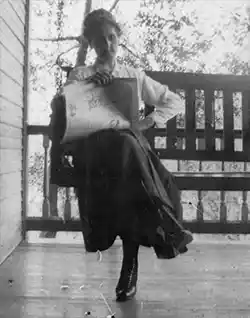
In 1914 President Woodrow Wilson declared Mother’s Day as a national holiday to celebrate the “tender, gentle army” – America’s mothers. Almost 60 years later in 1972, President Nixon declared Father’s Day a national holiday. Read on for details about who started which holiday, as well as where and when.
Mother’s Day: Ladies First
Across the vast canvas of America, a familiar scene unfolds on the second Sunday of May. Laughter spills from bustling brunch cafes, flower shops resemble vibrant explosions of color, and a collective hum of appreciation hangs in the air. It’s Mother’s Day, a tradition as ingrained as the stars on the national flag. Yet, this day’s roots weave a surprising tapestry, stretching back centuries and across continents.

Our journey begins not in bustling metropolises, but in the quiet reverence of medieval England. Here, Mothering Sunday, held on the fourth Sunday of Lent, saw families reunite and attend church services with their mothers. While this tradition persists in some corners of Britain, a new bloom sprouted on American soil in the early 20th century.
In a small West Virginia town, a woman named Anna Jarvis sought to honor her own mother’s tireless work for the community’s women. This seed of appreciation blossomed, taking root across the nation. By 1914, President Woodrow Wilson declared a national holiday, a day to celebrate the “tender, gentle army” – America’s mothers. A symbolic language of flowers emerged – a red or pink carnation for a living mother, white for one who had passed.

And in the cobbled streets of Charleston, Mother’s Day coincides with the Second Sunday on King Street, offering a vibrant blend of family fun and shopping delights. Even the College of Charleston’s graduation falls on this weekend, allowing mothers the joy of witnessing their children’s academic triumphs.
So, as we celebrate Mother’s Day, let us remember – it’s a day not just of brunches and carnations, but a vibrant echo of a timeless sentiment, a celebration of mothers that transcends borders.
Father’s Day
While Mother’s Day boasts a longer reign, Father’s Day isn’t some usurper to the throne. It’s a celebration that, like a younger sibling, took a bit longer to find its footing.

Just a year after the first Mother’s Day in West Virginia, tragedy struck another town in the state. A mining accident left a void, prompting a day of remembrance for the fallen fathers. The sentiment echoed a few years later in Spokane, Washington, where a daughter sought to honor her Civil War veteran dad who single-handedly raised his children. Local churches rallied behind her, and the idea resonated across the nation. Although Sonora Smart Dodd of Spokane is known as being responsible for founding Father’s Day, the first person to suggest a one-time memorial for fathers was Grace Golden Clayton. This resulted in the first recorded celebration of of Father’s Day on July 5, 1908 in Fairmont, West Virginia.
However, unlike Mother’s Day, Father’s Day had to wait until the 1970s for official recognition by Congress. Now, it basks in the sunshine of the third Sunday in June. Just like the red rose acknowledges a living father and the white one a departed one, Father’s Day traditions are more personal, a reflection of each dad’s unique interests.
Charleston’s soul beckons many fathers outdoors. The beaches and boat landings teem with families on Dad’s special day. Renting kayaks at Shem Creek or embarking on a family sunset cruise might be just the ticket for some. Others might crave a swing on the golf course or a backyard cookout. But let’s be honest, for some dads, a quiet escape, a little “me” time, might be the most cherished gift.
The 1930s saw a curious attempt to dethrone both Mother’s and Father’s Day in favor of a singular Parent’s Day. Thankfully, the idea fizzled. Moms and dads get to keep their special days, each a celebration as unique and cherished as the traditions they inspire.

